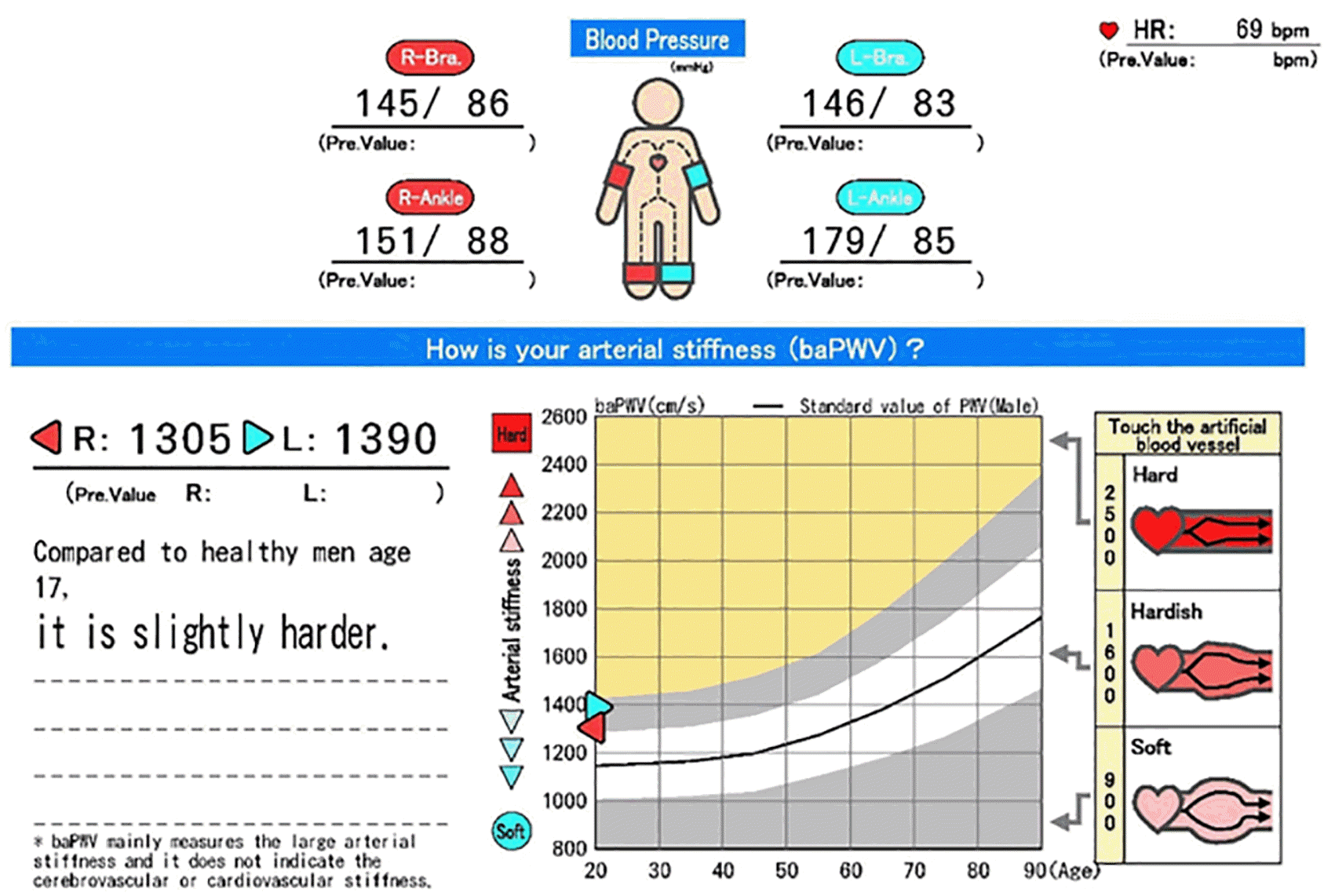Abstract
Neurofibromatosis type 1 is an autosomal dominant genetic disorder characterized by the presence of café au lait spots, axillary and inguinal freckling, Lisch nodules, and neurofibromas. Hypertension is a relatively frequent complication, usually caused by renal artery stenosis or pheochromocytomas. We describe the case of a 15-year-old boy with neurofibromatosis type 1 who was also diagnosed with resistant hypertension. Despite an extensive evaluation, the etiology of his hypertension remained indeterminate. Estimation of the brachial-ankle pulse wave velocity and ambulatory arterial stiffness index could validate the existence of arterial stiffness. Further, a combination of carvedilol and angiotension receptor blockers was administered, which successfully controlled his resistant hypertension. We propose that the estimation of the brachial-ankle pulse wave velocity measure and ambulatory arterial stiffness index is a noninvasive method, and these two parameters are relatively simple tools that can be used for the detection of arterial stiffness due to neurofibromatosis type 1-related vasculopathy.
REFERENCES
2.Virdis R., Balestrazzi P., Zampolli M., Donadio A., Street M., Lorenzetti E. Hypertension in children with neurofibromatosis. J Hum Hypertens. 1994. 8:395–7.
3.Reisch N., Peczkowska M., Januszewicz A., Neumann HP. Pheochromocytoma: presentation, diagnosis and treatment. J Hypertens. 2006. 24:2331–9.

4.Lama G., Graziano L., Calabrese E., Grassia C., Rambaldi PF., Cioce F, et al. Blood pressure and cardiovascular involvement in children with neurofibromatosis type1. Pediatr Nephrol. 2004. 19:413–8.
6.Urbina EM., Williams RV., Alpert BS., Collins RT., Daniels SR., Hayman L, et al. Noninvasive assessment of subclinical atherosclerosis in children and adolescents: recommendations for standard assessment for clinical research: a scientific statement from the American Heart Association. Hypertension. 2009. 54:919–50.
7.Payne RA., Wilkinson IB., Webb DJ. Arterial stiffness and hypertension: emerging concepts. Hypertension. 2010. 55:9–14.
8.Simonetti GD., VON Vigier RO., Wühl E., Mohaupt MG. Ambulatory arterial stiffness index is increased in hypertensive childhood disease. Pediatr Res. 2008. 64:303–7.

9.Chen X., Huang B., Liu M., Li X. Effects of different types of antihypertensive agents on arterial stiffness: a systematic review and meta-analysis of randomized controlled trials. J Thorac Dis. 2015. 7:2339–47.




 PDF
PDF ePub
ePub Citation
Citation Print
Print



 XML Download
XML Download